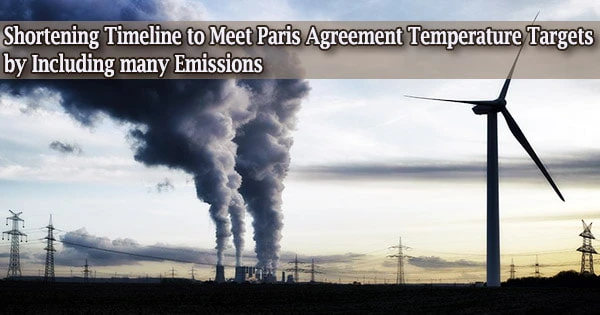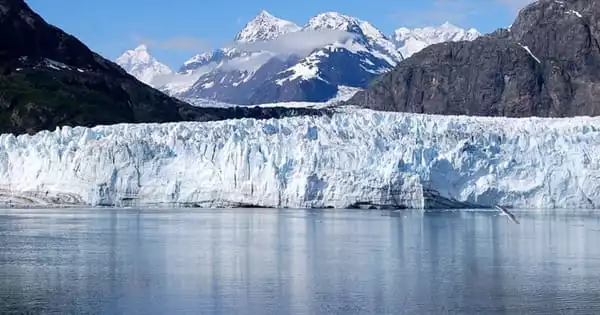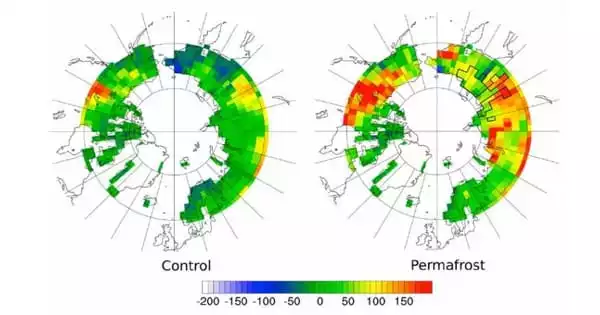In the Paris Agreement, nations worldwide committed to keeping global warming to a maximum of 2 degrees Celsius or 1.5 degrees Celsius. Countries are examining how many greenhouse gases may still be released while staying below these temperature targets, which are thought to be the top limits to prevent the most catastrophic effects on the climate system, when emissions rates progressively start to fall.
The amount of warming already assured by previous emissions is calculated by new research led by the University of Washington. While this issue has already been studied in relation to carbon dioxide, the new research also takes into account associated pollutants like methane, nitrogen oxide, and aerosols like sulfur or soot.
Even if all emissions stop on that date, the study concludes that under a moderate future emissions scenario, the world has a two-thirds chance of at least temporarily exceeding warming of 1.5 degrees Celsius by 2029.
By 2057, there is a two-thirds risk that the earth will at least briefly warm above 2 degrees Celsius if humans continue on their current moderate emissions route. Nature Climate Change published the study on June 6, 2022.
“It’s important for us to look at how much future global warming can be avoided by our actions and policies, and how much warming is inevitable because of past emissions,” said lead author Michelle Dvorak, a UW doctoral student in oceanography. “I think that hasn’t been clearly disentangled before how much future warming will occur just based on what we’ve already emitted.”
This paper looks at the temporary warming that can’t be avoided, and that’s important if you think about components of the climate system that respond quickly to global temperature changes, including Arctic sea ice, extreme events such as heat waves or floods, and many ecosystems. Our study found that in all cases, we are committed by past emissions to reaching peak temperatures about five to 10 years before we experience them.
Kyle Armour
In order to investigate what would happen to Earth’s temperature if all emissions abruptly stopped in each year from 2021 to 2080, following eight possible emissions trajectories, the authors employed a climate model.
Although abruptly ceasing all human-generated emissions is unfeasible, the authors claim that doing so would set a lower threshold for future warming.
Previous research of this kind examined carbon dioxide emissions and discovered that after emissions stop, there is little to no “warming in the pipeline.” However, the new study also takes into account particle pollutants like sulfur and soot, as well as shorter-lived greenhouse gases like methane and nitrogen oxide.
Different emissions can cause the globe to warm or cool. Particulate pollution counteracts global warming by reflecting sunlight and having a minor cooling impact. These particles leave the environment considerably more quickly than gases that trap heat.
Thus, if all human emissions were to be stopped at once, there would be a brief increase in temperature of roughly 0.2 degrees Celsius, which would start right once and endure for 10 to 20 years.
“This paper looks at the temporary warming that can’t be avoided, and that’s important if you think about components of the climate system that respond quickly to global temperature changes, including Arctic sea ice, extreme events such as heat waves or floods, and many ecosystems,” said co-author Kyle Armour, a UW associate professor of atmospheric sciences and of oceanography.
“Our study found that in all cases, we are committed by past emissions to reaching peak temperatures about five to 10 years before we experience them.”
The study concludes that the overall amount of carbon that humans may still emit, or the “carbon budget,” is much lower than previously thought if countries are to meet their targets of staying below 2 degrees Celsius of warming.
“Our findings make it all the more pressing that we need to rapidly reduce emissions,” Dvorak said.
Other co-authors are Dargan Frierson and Marcia Baker at the UW; Cristian Proistosescu at the University of Illinois at Urbana-Champaign; and Chris Smith at the University of Leeds. The U.K. Natural Environment Research Council, the National Oceanographic and Atmospheric Administration, the Alfred P. Sloan Foundation, and the National Science Foundation all provided funding for the study.
















